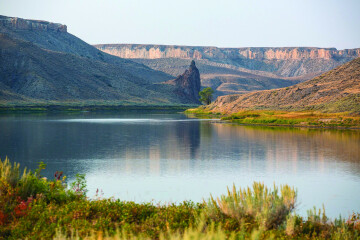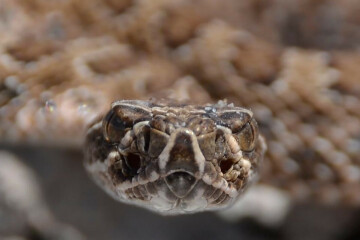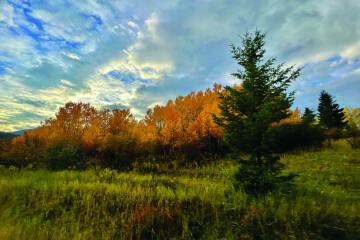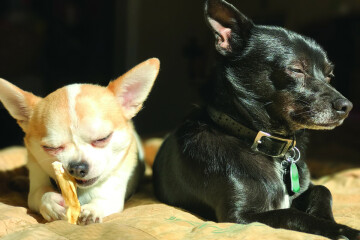United States Thanksgiving Bird Almost Became Our National Emblem
Despite the turkey’s lofty stature of approval with most Americans, especially on Thanksgiving day, many of us are not aware that Benjamin Franklin campaigned vigorously to make the wild turkey our national bird. He didn’t succeed, but he came close – the Bald Eagle beat out the turkey by one vote and became our national emblem. Franklin proclaimed that “the turkey is a much more respectable bird,” and strongly suggested that it was a “bird of courage.” Franklin had a notable distain for the Bald Eagle and mentioned in a 1874 letter to his daughter that “he is a bird of bad moral Character,” that “he is a rank Coward,” and “certainly is not a “proper representative to the new nation.”
The wild turkey, admittedly, does possess many positive attributes. Largest of the nation’s upland game birds, the turkey has been exquisitely designed by nature. In appearance and versatility, it takes a back seat to none of the 650 species of birds found in North America. Indeed, specifications for this streamlined version of the barnyard tom turkey would be a best seller in any locality.
Truly an all American bird.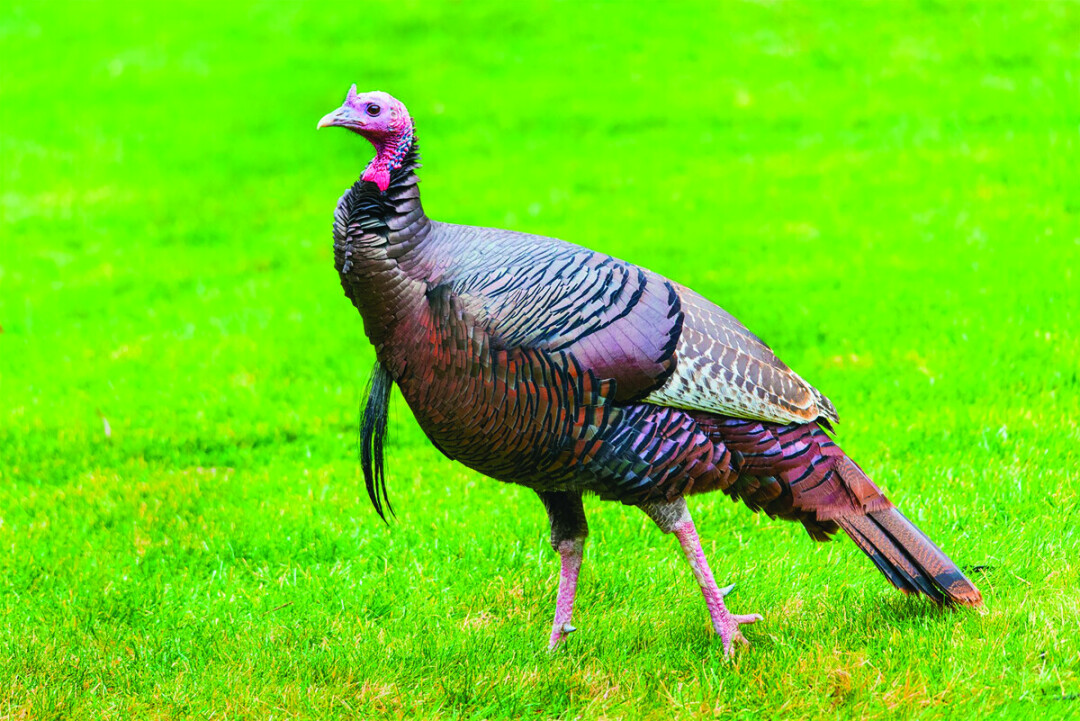
• Plumage iridescent and metallic colored, like a prized old Hawken rifle barrel. A geisha-like bronzed fan on one end and a coarse “beard” springing from the breast on the other end. Head naked; bluish with red wattles (fleshy, wrinkled pieces of skin which hang from the turkey chin) that become gorged with blood and resemble quivering flaming cravats during flamboyant courtship rituals. Height three feet, wingspan to 3 and 1/2 feet, weight up to 35 pounds.
• Eagle-eyed vision with computerized eyes that detect direction, distance, size, shape, brightness, color hue, color intensity, three-dimensional depth and motion of an object.
• Vocabulary profuse with a wide repertoire of calls: the whistle or “kee, kee, kee” of the very young bird, the alarm “putt” or “pert,” the “keouk” yelp, the “cluck,” the guttural roost call, and the mature male’s gobble.
• Capable of racing on powerful legs at bursts of 25 miles per hour. Strong fliers that can flush like a grouse, clear treetops and glide on set wings at 50 miles per hour for a mile or more.
• For the hunter, there’s no experience like that of calling up a tom turkey. It quickly becomes an addiction more binding than barbiturates, more tenacious than the craving for alcohol and drugs. People, with professional help, can overcome these latter addictions. Nobody has ever overcome the obsession of stalking a wild turkey.
TURKEY HISTORICAL FACTS OF INTEREST
Although the wild turkey falls into the “all American” classification as our symbol of Thanksgiving, a generous sprinkling of speculation still exists about the origin of its name. Historical documents mention two possible explanations, one geographic and the other etymological, a method of tracing a word’s derivation. Details, however, are sketchy.
When the early Spanish conquistadors returned from the New World in the first part of the 16th century, one of their “prizes” was the turkeys that Mexican Indians domesticated from wild stock. The big birds, with their princely strut and metallic feathers, closely resembled the peafowl and guinea fowl, both of which were introduced to Europe from Asia Minor, much of which was then known as “Turkey.” This provides one possibility of the historical origin of the name.
Other early naturalists thought of the turkey as a native of India. For example, in his book, “Gifts of the Americas: the Turkey,” researcher S. Podolsky refers to the Tamil language of India, where one can find the word “toka,” meaning train or trailing skirt. Adapted into Hebrew, “toka” becomes tukki.” From here we can effortlessly take one more step to the anglicized word, turkey.
Site of the first Thanksgiving
Most Americans model their Thanksgiving holiday after the 1621 autumn feast in Plymouth, Massachusetts, shared between members of the Wampanoag native American tribe with 53 English colonists known as Pilgrims. Some historians disagree, maintaining that Florida may have been the original first Thanksgiving site in North America. In 1565, Spanish settlers planted a cross on the beach to christen the new settlement of St. Augustine, and to give thanks for God’s providence. The Spanish settlers shared a festive meal with native Timucuan tribe members. No information was ever recorded on what the celebrated meal consisted of, and nowhere in the historical documents of the first celebration is the word “Thanksgiving” mentioned.
What was on the first Thanksgiving menu at Plymouth, Massachusetts?
Despite what some may think, pumpkin pie or oven roasted turkey was not served at the first Thanksgiving meal, due to the lack of ovens. Cuisine historians believe that the meal consisted largely of seafood: mussels, lobster, and clams. Diners certainly ate venison, and likely some assortment of wild fowl – turkey, duck, goose and swan. No mashed potatoes, however. Potatoes had only been recently shipped from South America to Europe. Ditto for sweetened cranberry sauce. Although cranberries were eaten by Native Americans and used as a red dye and for treating wounds, they certainly were not on the menu, since the Pilgrims had long exhausted their sugar supply by November 1621. Unknown to the Pilgrims, cranberries were packed with anti-inflammatory, antibacterial, and antioxidant compounds. Although pumpkins and squash were available and used by the Wampanoag people, Pilgrims turned up their noses at them that first winter. The following summer, colonists planted the seeds given to them, and were introduced to the many uses of pumpkin, which quickly became a common staple. Pumpkins, as a food source, quickly caught on in later years, as suggested by the following couplet written by a Pilgrim colonist in the 1630’s; “We have pumpkins at morning and pumpkins at noon; If it were not for pumpkins we would be undoon.”
Presidential declarations for a National Day of Thanksgiving
George Washington issued the first Thanksgiving proclamation by the government of the United States to commemorate the end of the Revolutionary War and the successful ratification of the Constitution. Washington called for the national day of thanks on the last day of November.
The first official proclamation of a national Thanksgiving holiday didn’t actually arrive until 1863, when President Abraham Lincoln called for an annual Thanksgiving celebration on the final Thursday in November. The main catalyst steering for this successful proclamation came about through the dedicated efforts of abolitionist magazine editor and writer, Sarah Josepha Hale, who authored the popular nursery rhyme, “Mary had a Little Lamb.” For better than three decades Hale published numerous articles, and engaged in the impassioned lobbying of key governors, senators, and presidents calling for a national Thanksgiving Day. President Lincoln finally honored her request in 1863 at the height of the Civil War, in a proclamation “to ask God to commend to his tender care all those who have become widows, orphans, mourners or sufferers in the lamentable civil strife” and to “heal the wounds of the nation.”
Unknown to many Americans was Franklin D. Roosevelt’s 1939 attempt to move the holiday up a week in an attempt to spur retail sales during the Great Depression. His plan was met with intense opposition, and in 1941 Roosevelt reluctantly signed a bill making Thanksgiving Day the fourth Thursday in November.
Which of our presidents refused to recognize a Thanksgiving Day? It was Thomas Jefferson, who refused to declare a national day of thanks. Jefferson firmly believed in “a wall of separation between Church and State,” and believed that endorsing such a celebration would amount to state-sponsored religious worship.
Thanksgiving Trivia
The largest pumpkin pie ever baked in Ohio weighed 3,699 pounds and measured 20 feet in diameter. The Guinness world record pie was baked in i2010. Pie makings included 1,212 pounds of pumpkin, 525 pounds of sugar, seven pounds of salt, and 14.5 pounds of cinnamon.
The Guinness record for the heaviest pumpkin is a 2,560 pound whopper grown in Minnesota in 2022. The current Montana record is an orange 1,258 pound pumpkin grown in Fairfield in 2022. That record is expected to fall in 2023 at the Pumpkin Festival in Rapid City, South Dakota. It is here where a Lockwood grown pumpkin weighing 1,400 pounds will be displayed.
Americans gorge on a whopping 5.5 million pumpkin pies, although apple and pecan pies do better in numbers on this holiday. Of the 240 million turkeys raised annually, 45 million, or 18 percent, will be oven-roasted, grilled, poached, and deep-fried this year by ninety percent of Americans on turkey day. And we can’t forget the other traditional Thanksgiving foods including stuffing, mashed potatoes, gravy, squash, green beans, yams, cranberry sauce, and rolls, topped off with pumpkin, apple, or pecan pies.
Sparing a domestic plump turkey’s life
The first American president to spare a donated farm-raised turkey’s life was President John F. Kennedy, who, in 1963, graciously said; “We’ll just let this one go. It’s our Thanksgiving present to him.” The annual official tradition of “pardoning” a White House turkey first originated with President George W. Bush in 1969.
Today’s Thanksgiving Celebration
Thanksgiving may be America’s most beloved holiday, but over the past centuries each generation has added its own take on the fall tradition. Today’s Thanksgiving celebration has lost much of its original religious meaning; instead, much of it now centers on cooking and sharing a bountiful meal with family and friends, watching the Macy’s Thanksgiving Day parade of marching bands, performers, giant balloons, and spectacular floats, or watching a wide selection of college and NFL football games in person or on television. Volunteering, fortunately, still is a welcome nationwide Thanksgiving Day activity that has community groups holding food drives and providing free dinners for the less fortunate.
Final Notes on the Bald Eagle and the Turkey
Despite Benjamin’ Franklin’s firm disdain for the Bald Eagle, it has become as much a symbol of the United States as the stars and stripes and apple pie, so we would readily continue to vote for keeping them in that status. We also can’t deny the beauty of the Bald Eagle’s white head, piercing eyes, and wide wingspan soaring against a beautiful blue sky. They are regal, majestic, and they employ a badge of courage and strength. One final note about our National Bird: Would you and your family really want to be eating Bald Eagle rather than turkey at your next Thanksgiving dinner? I think we all know the correct answer to that question.
